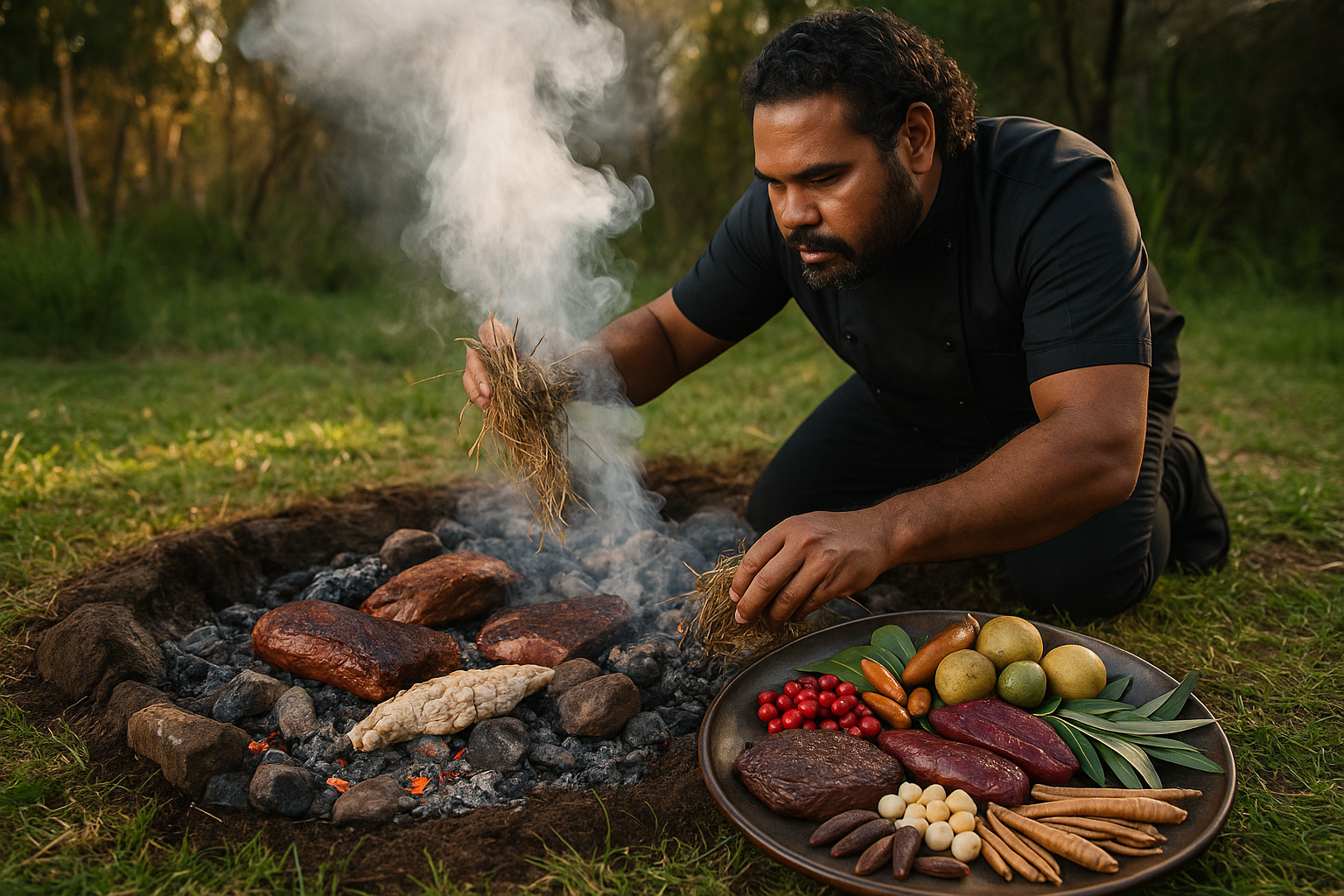Unearthing the Delights of Indigenous Australian Cuisine
Australia's culinary landscape is as diverse as its geography, characterized by a rich tapestry of cultures, flavors, and traditions. However, one cuisine that often stays under the radar is Indigenous Australian cuisine. This article aims to shed light on this unique culinary tradition, its significant ingredients, cooking techniques, and the contemporary movement to popularize it globally.

The Roots of Indigenous Australian Cuisine
Indigenous Australian cuisine, also known as Bush Tucker, is deeply rooted in the land and its native ingredients. Aboriginal Australians have lived off this land for more than 60,000 years, using traditional hunting and gathering techniques to source their food. This cuisine is characterized by native animals such as kangaroo, emu, and crocodile, and a diverse array of native fruits, nuts, roots, and seeds.
Native Ingredients: The Cornerstone of Bush Tucker
The uniqueness of Indigenous Australian cuisine lies in its native ingredients. These include the Macadamia nut, Wattleseed, Finger Lime, and Kangaroo Apple, among others. Each of these ingredients has a distinct flavor profile, making them a treasure trove for chefs seeking novel culinary experiences.
Traditional Cooking Techniques
Indigenous Australian cuisine focuses on simple, yet effective cooking techniques. Ground ovens, a traditional method of cooking, involve digging a hole in the ground, heating stones with fire, and using these stones to cook food wrapped in leaves. This technique imparts a unique, earthy flavor to the food.
The Modern Bush Tucker Movement
The modern Bush Tucker movement aims to bring this unique cuisine to the forefront of global gastronomy. Chefs and food enthusiasts are exploring ways to incorporate native ingredients and traditional cooking methods into contemporary dishes, creating a fusion of old and new flavors.
Bush Tucker and Sustainability
Indigenous Australian cuisine also offers lessons in sustainability. Aboriginal Australians have always practiced sustainable hunting and gathering, respecting the land and its resources. As the world grapples with issues of food security and sustainability, Bush Tucker offers a template for a more sustainable culinary future.
Useful Insights:
-
Indigenous Australian cuisine, or Bush Tucker, is a rich culinary tradition that uses native ingredients and traditional cooking techniques.
-
This cuisine provides a unique fusion of flavors, with ingredients like Macadamia nut, Wattleseed, Finger Lime, and Kangaroo Apple.
-
The modern Bush Tucker movement is gaining momentum, with chefs incorporating these traditional ingredients into contemporary dishes.
-
Bush Tucker also offers insights into sustainable food practices, something increasingly relevant in today’s culinary landscape.
In conclusion, Indigenous Australian cuisine offers a unique culinary experience, marked by a fusion of earthy flavors and sustainable practices. Its diverse ingredients and traditional cooking techniques create a palette of flavors that is yet to be fully explored. With the modern Bush Tucker movement gaining momentum, it is high time we embrace and celebrate this rich culinary heritage. As food enthusiasts, let’s expand our horizons and embark on this unique gastronomical journey, one native ingredient at a time.




